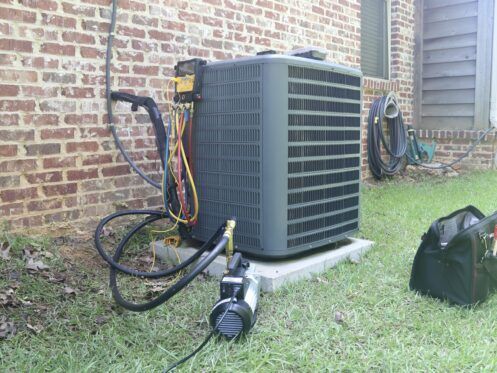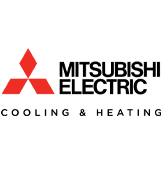
HVAC systems are an integral part of any home, regardless of the layout, providing climate control and improving indoor air quality to enhance comfort levels. Multi-story homes present unique heating and cooling challenges, and if you don’t choose the right HVAC system, you will likely have inconsistent temperatures across the different floors. Because heat tends to rise, your upper levels will probably be warmer than the lower levels.
Unfortunately, your energy costs may increase as you attempt to normalize these temperature differences. The good news is that with the help of an HVAC professional, you can choose the right HVAC system to give you greater temperature control across the different levels of your home.
You have two main options when choosing an HVAC system for a multi-story home. You can implement an HVAC zoning setup or install multiple HVAC systems. Each option has pros and drawbacks, and with the help of an HVAC expert, you can make an informed decision that makes sense for your home’s layout.
The HVAC System Zoning Option
An HVAC zoning system uses a series of dampers connected to the central HVAC unit, allowing targeted control over air ducts that go into specific zones of your home. You can have as few as two zones to as many zones as there are rooms in your multi-story home. If you are building a new home, an HVAC expert can help design a zoning system that provides consistent temperature control. Zoning equipment can also be incorporated into your current system.
The upfront cost of an HVAC zoning system is less than the multiple-system approach. You only need one centralized HVAC system for the entire home, and if you already have one, you only need to factor in the cost of the zoning equipment. Maintaining one centralized HVAC system is also less complicated and more cost-effective than maintaining multiple systems. HVAC system zoning removes the hassle of calculating the separate thermal capacities of the area that a multiple-system setup would need to cover. Finally, HVAC zoning allows you to enjoy the convenience of centralized temperature control because all the individual zones connect back to the master control.
While centralized control can be an advantage, it can also be a drawback because you can only have one setting active at a time. In other words, you cannot heat one zone while cooling another. There may also be some efficiency loss, particularly when your system channels warm or cool air to zones located far from the central HVAC unit. Having only one HVAC system for your entire home means you will have no backup and have to contend with uncomfortable temperatures if the system breaks down or fails.
The Multiple-System Approach
The multiple-system approach involves having separate systems for the major subdivisions in your home, such as the different levels. For example, you may have a two-system HVAC setup for a two-story residence. This approach may be best if you have a low-capacity system that struggles to maintain the desired temperatures throughout your entire home. In this case, adding another system will help share the load so you can enjoy consistent comfort. Similarly, you can avoid straining your existing system by adding another one when you extend your home or build an addition.
Having more than one system ensures you can enjoy comfortable temperatures in some areas of your home, even if one of the HVAC units breaks down. You will also have more precise temperature control because you can heat an area covered by one system while cooling the area covered by another system. This flexibility allows the members of your household to enjoy different levels of comfort depending on their individual preferences. In addition, each system will run more efficiently when compared to having a single unit serving the whole home. The duct lengths from each HVAC system will be shorter, reducing the loss of treated air.
On the other hand, installing more than one HVAC system for your home can be expensive. Similarly, you will be looking at more maintenance costs throughout the useful life of each system. In addition to the installation and maintenance costs, you may have to deal with higher energy costs if you install more than one HVAC system. Two or more independent HVAC systems will consume more energy than a centralized system with the same thermal capacity as the combined capacity of the smaller units.
Other Options
While HVAC system zoning and multiple-system approaches are the most popular options, they are not the only choices. However, it is worth pointing out that many of the other options only provide a cooling effect. They are not intended to heat your home. Even so, they have their inherent advantages and may be well-suited for certain circumstances.
Window air conditioners may be a cost-effective solution for temperature control if you have limited space in your home. They would also be a great option if you only need cooling in specific areas throughout your home, such as the second story. As the name suggests, window air conditioners are installed directly into your windows and provide localized cooling for that particular living space.
Another option quite similar to window air conditioners is portable AC units. These air conditioning units offer more flexibility because you can move them from one room to the next across the different levels of your home. Portable air conditioners typically require an exhaust hose, and this hose vents hot air through a window.
Consult an HVAC Expert Today
Many variables go into determining the right HVAC system for your multi-level home. While a new build gives a blank slate to work with, the HVAC professional will need to factor in a few considerations, such as the thermal capacity of the system. If you want to upgrade an existing HVAC system, the technician must consider how the air duct network is currently set up to provide the most sensible options.
At Polar Air & Heating, Inc., our highly experienced HVAC experts understand the nuances of each approach. We will speak to you about your heating and cooling needs and follow up with a thorough evaluation of your home before making our recommendations. Our knowledgeable HVAC professionals will gladly answer your questions so you can move forward with your project with confidence.
Polar Air & Heating, Inc. offers high-quality heating and air conditioning services to residents of Las Vegas and throughout the surrounding areas. In addition to central HVAC systems, our qualified technicians install, maintain, and repair ductless mini-splits and heat pumps. We also offer indoor air quality services for a healthier home. We are proud to be a top Las Vegas HVAC company since our founding in 1998. With our decades of experience and commitment to superior customer service, you can trust our NATE-certified HVAC technicians to install and maintain whichever HVAC system you choose for your multi-story home. Call Polar Air & Heating, Inc. today to schedule an appointment!






















